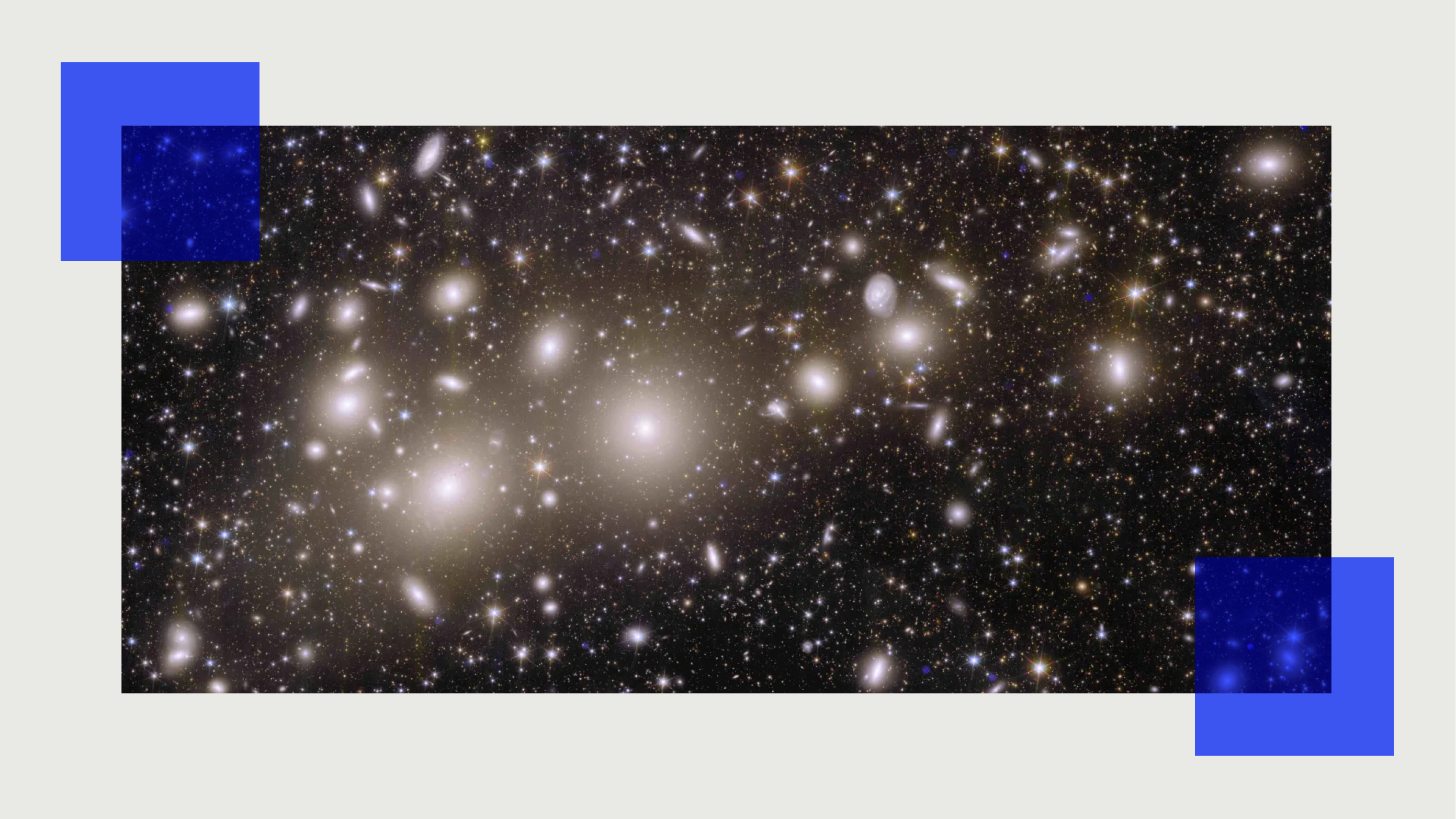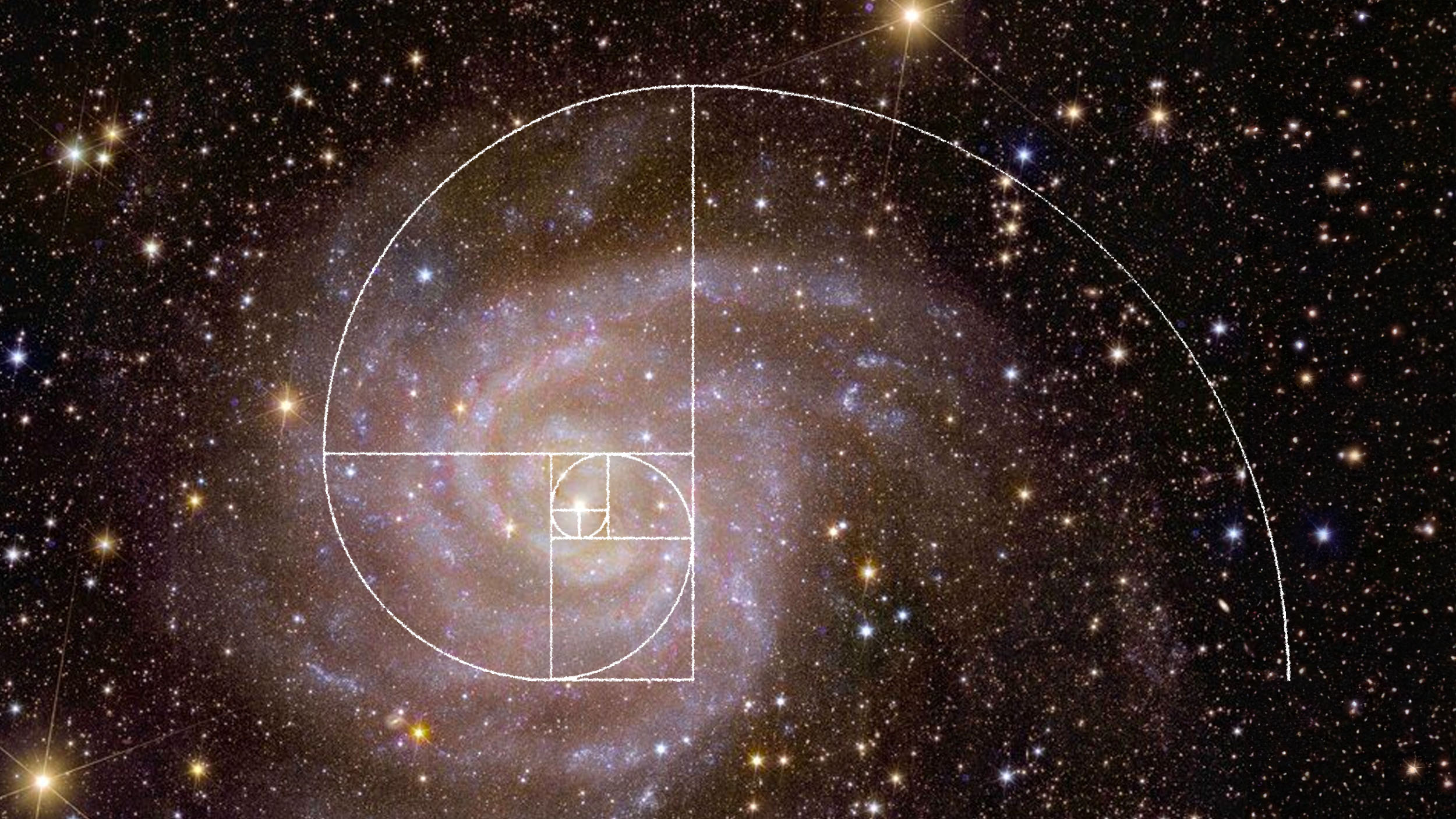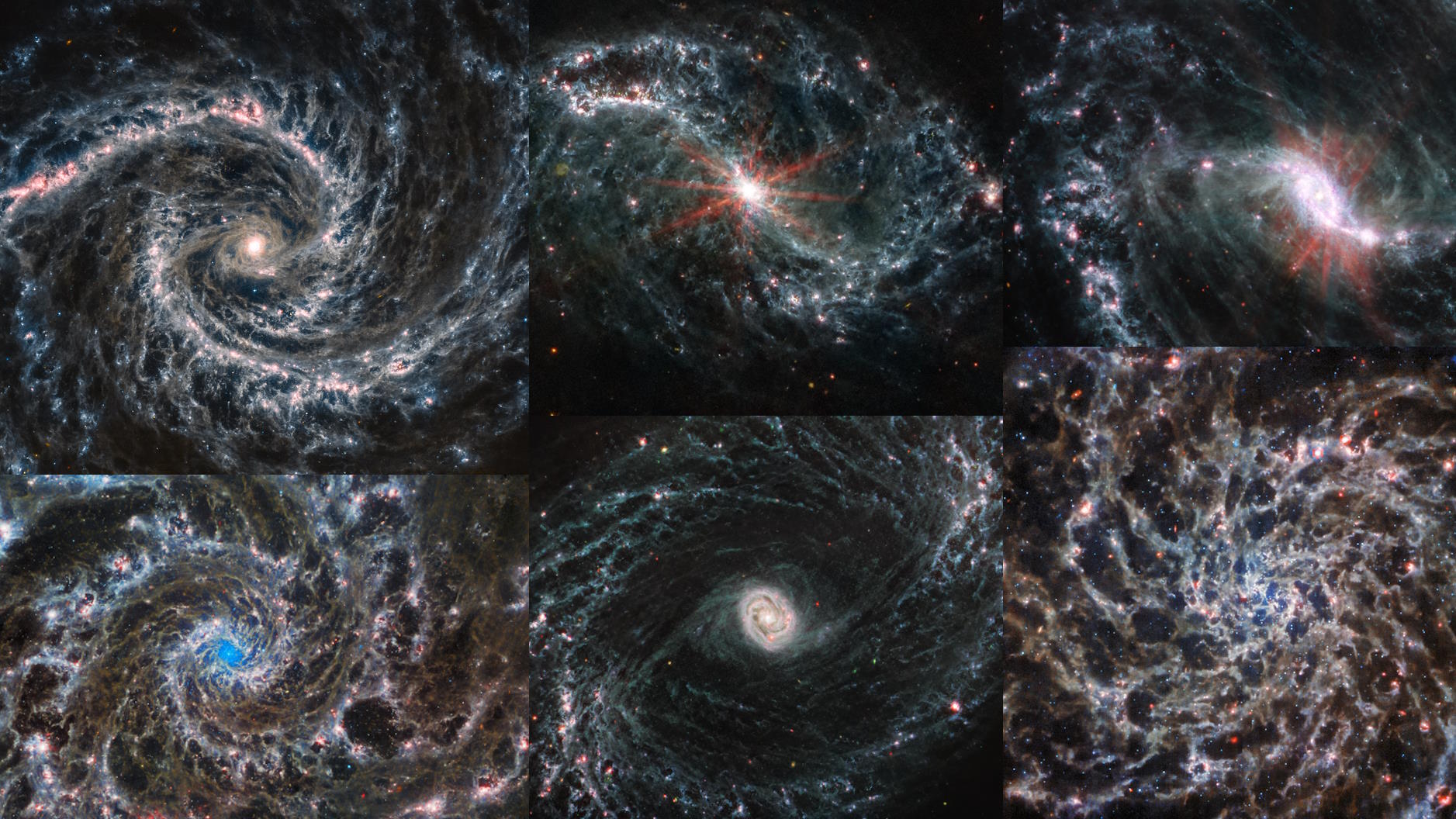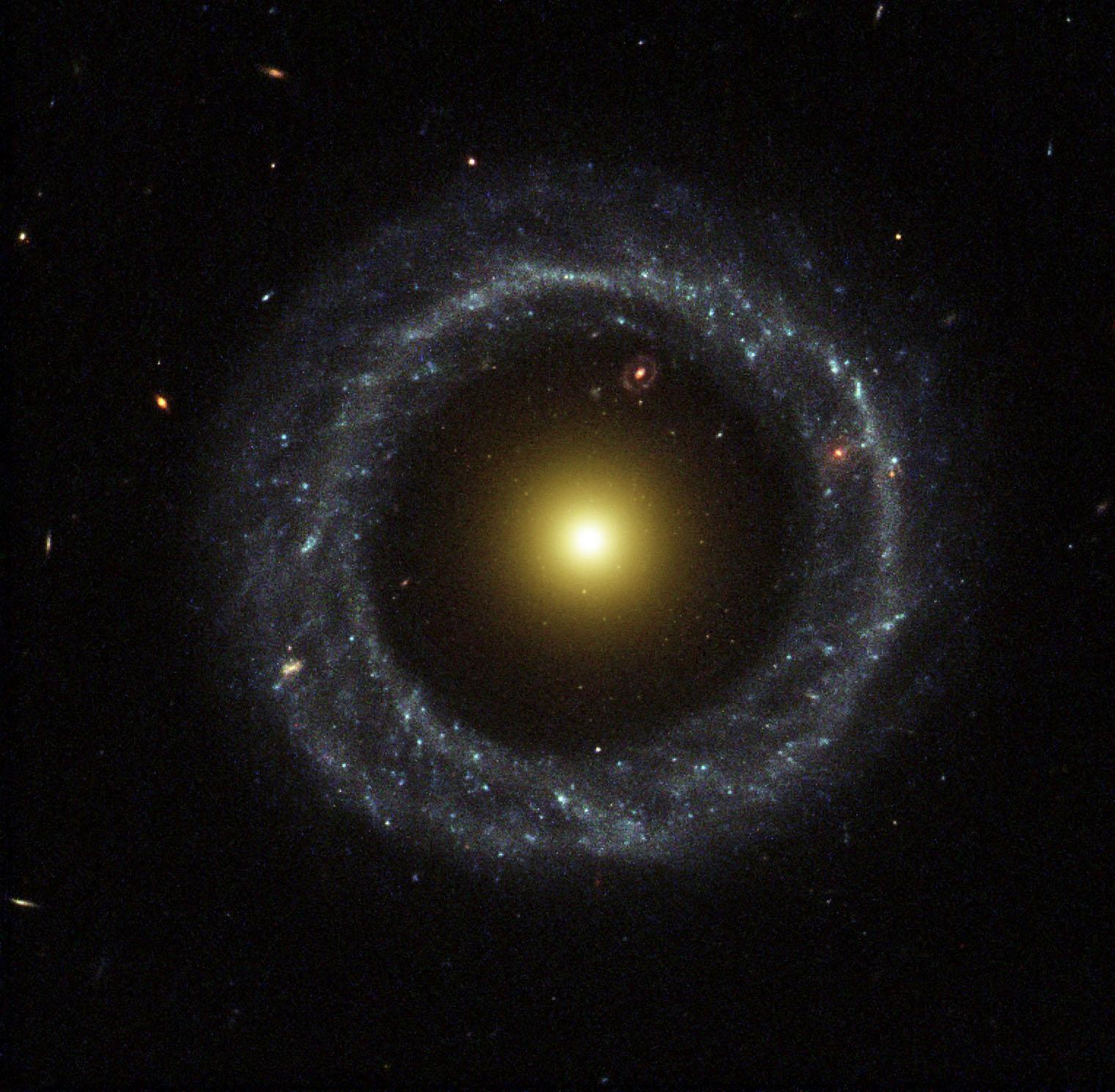JWST reveals spiral galaxies’ life cycles, from dust to stars
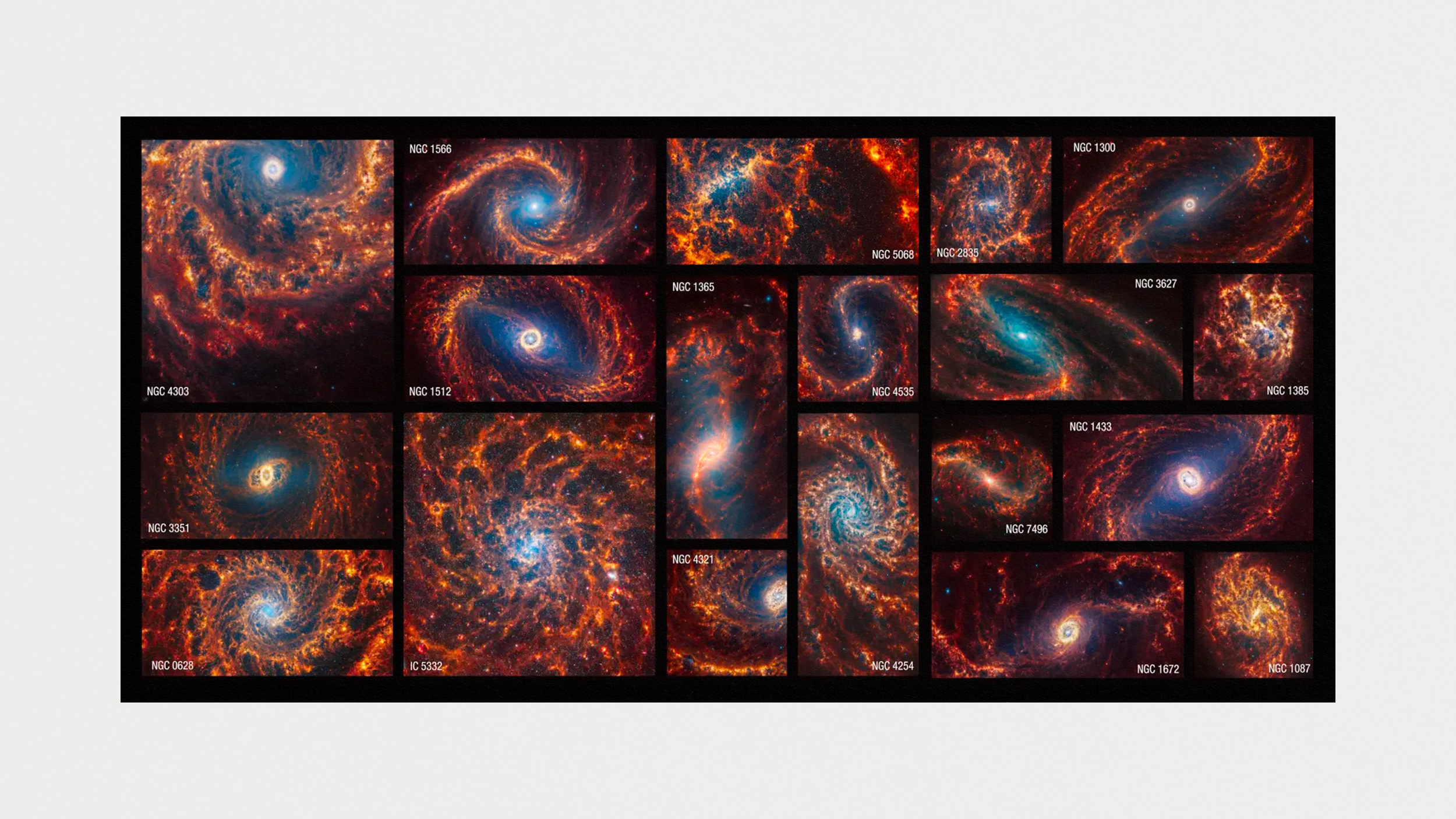
- Within spiral galaxies like the Milky Way, the majority of star-forming material is found in a disk-like structure, where dense spiral arms arise and new stars form within them.
- However, by mapping the gas and dust, rather than the stars themselves, JWST can reveal details that no optical observatory can see, including the sites of future star-formation and recent stellar deaths.
- With the full release of the PHANGS catalog, which consists of deep JWST imaging of 19 nearby spiral galaxies, we’ve gained insights into the life cycles of stars within these spirals like never before.
If there’s one rule that’s practically universal in astronomy, it’s this: you can only observe the parts of the Universe that your instruments are sensitive to. As a result, when most of us think about the objects that are out there in the cosmos, we think about the components that are easiest to see: things that are bright, close by, and that emit radiation in the form of visible light. When we think of galaxies, we think of the stars within them; when we think of stars, we think primarily of the ones that appear brightest to our eyes and in our telescopes. But there’s a whole Universe out there to explore, and much of it doesn’t emit any visible light at all.
This is true even for large spiral galaxies like the Milky Way. We aren’t just a collection of stars, with the occasional “dust lane” of neutral matter that blocks the starlight from behind it, but rather a rich network of gas and dust, dotted with stars and with cavities blown in them by violent stellar cataclysms. By looking at 19 nearby, face-on spiral galaxies with JWST’s remarkable, unprecedentedly sharp and powerful eyes, the PHANGS (Physics at High Angular resolution in Nearby GalaxieS) collaboration has at last uncovered the life cycles of stars within them. From breathtaking sights to breakthrough science, here’s what was revealed when we took our greatest look of all at these nearby Milky Way analogues.

For a long time, whenever we looked at a large, massive spiral galaxy like the Milky Way, we assumed that what we could see — the stars — lined up with where the mass was. After all, in our Solar System, the most luminous object of all, the Sun, makes up some 99.8% of the entire Solar System’s mass. But it turns out that’s not true for galaxies; stars represent only about 2% of a galaxy’s total mass. Most of a typical galaxy’s normal matter is in the form of gas, dust, and plasma, with stars only making up a fraction of atom-based normal matter. Meanwhile, the majority of a galaxy’s overall mass is made of dark matter: a substance whose gravitational influence can be detected, but that leaves no absorption or emission signature anywhere across the electromagnetic spectrum.
If you want to understand the life cycle of stars, you can’t simply look in visible light alone, but rather need to examine the presence, distribution, and features of normal matter beyond merely the luminous stars. You need to understand the gas within the galactic disk, and how it clumps up in arm-like configurations as density waves ripple through it. You need to understand how waves of star-formation occur throughout the galaxy, from the central bulge all the way to the outskirts, as well as how gas gets funneled from one location to another. And you also need to understand the process of feedback and stellar death: where energetic light, winds, and even shockwaves of matter from living and dying stars impact the matter within not only the spiral arms but the greater galactic disk.
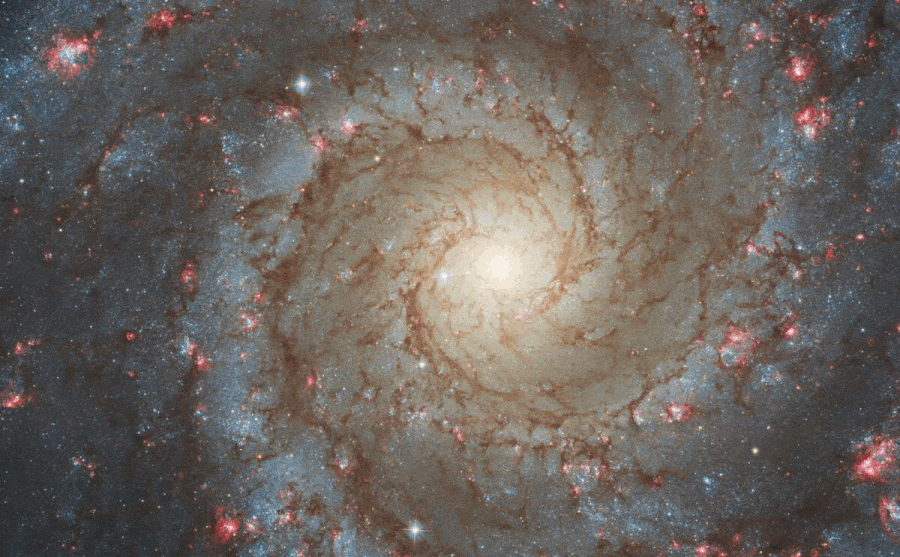
That’s the scientific motivation for why we’d need the PHANGS program in the first place, just like the acronym states: we need to image these galaxies
- at high angular resolution,
- in wavelengths of light that reveal the gas and dust within them,
- which drive the formation of new stars,
- in order to understand the physics and astrophysics of the processes at play.
The collaboration was extremely selective in choosing its targets, picking 19 face-on spiral galaxies that had already been imaged in great detail by the Hubble Space Telescope, by the Very Large Telescope’s MUSE instrument, and from the Atacama Large Millimeter/submillimeter Array, which covered the ultraviolet, optical, and radio sets of wavelengths. These galaxies are both large and close by, giving them a large angular size, while their face-on orientation allows us to view them from a perspective we’ll never get of our own Milky Way. Combined, these features make these 19 galaxies ideal targets for being observed by large-aperture, space-based observatories.
If we want to achieve high-resolution views of the stars, gas and dust within these galaxies, our best tool is JWST: which can image in both near-infrared light (revealing stars and sufficiently hot gas) and mid-infrared light (which showcases cooler gas and dusty features). Some of the PHANGS galaxies were imaged early on by JWST’s MIRI, the mid-infrared instrument, and the sights were immediately spectacular.
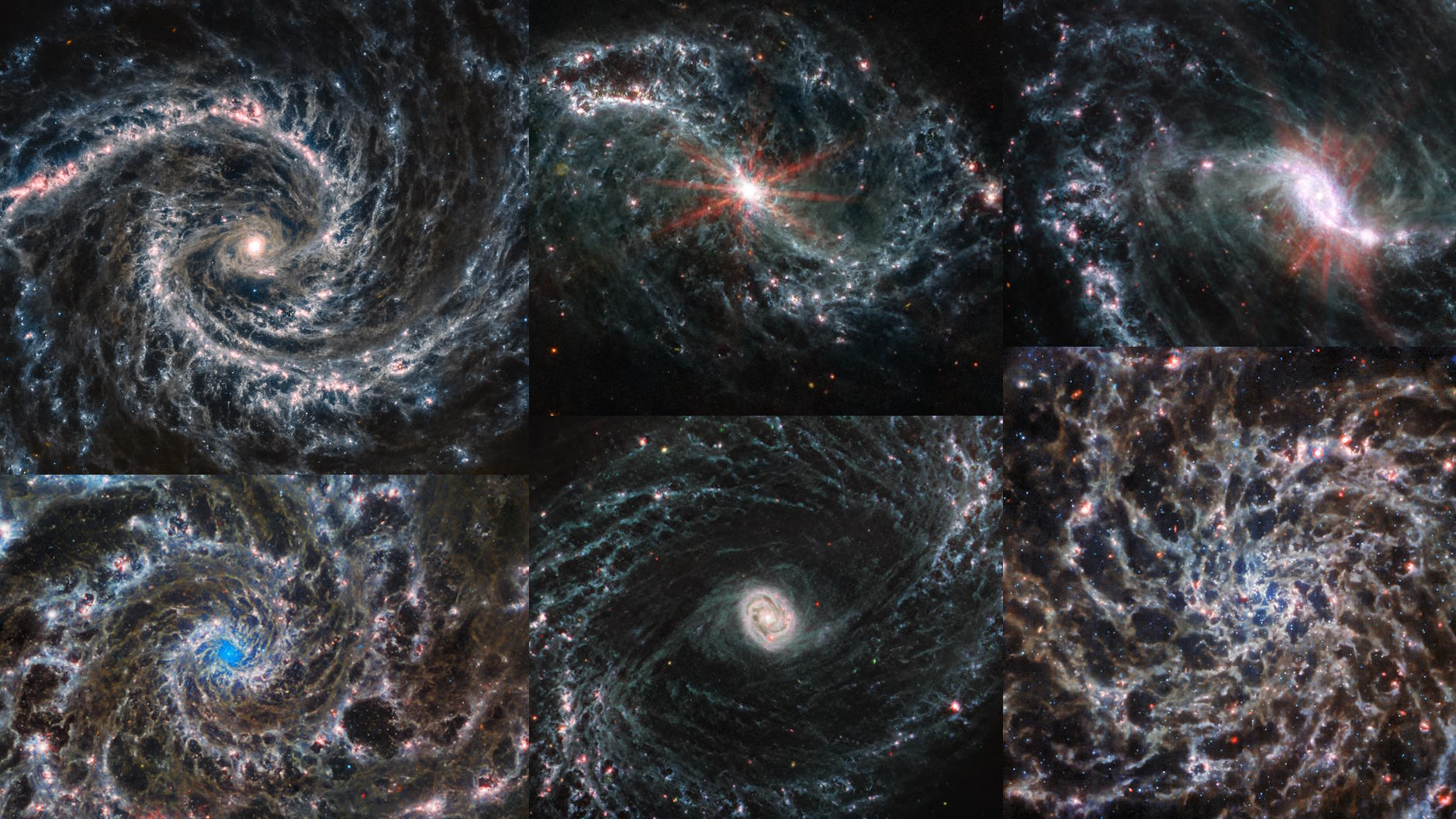
As you can see even from a visual inspection, the same dust that leads to the formation of new stars and that lines the arms of spiral galaxies doesn’t block our view of the luminous sources in infrared light, but rather shines brightly of its own volition. As starlight strikes the dust within a galaxy, it heats up, but not to a “hot” temperature in the conventional sense of the word, but rather to temperatures that are hot only in comparison to the deepest depths of intergalactic space: just tens of kelvin above absolute zero.
Yes, dust does indeed trace the spiral arms of these galaxies nearly perfectly, revealing the most intense regions of new star-formation within these galaxies. When you find a galaxy with a prominent bulge of stars, it glows bright in the infrared: a hint of central activity within the galaxy’s nucleus, and potentially even an active supermassive black hole. Shells of overlapping material will glow brightly in infrared light and are driven by recent episodes of star formation. And many “pockets” within the dusty arm-like regions can be seen in a variety of galaxies, representing regions where recent episodes of star-formation and stellar cataclysms, such as supernovae, have blown any remaining dust away.

But perhaps most remarkable are the intricate, filamentary networks of gas and dust that line these dense, arm-like structures within these spiral galaxies. Whereas the gas in most galaxies is made up of bare atoms or simple molecules and ions — normally just two or three atoms bound together, often with one or two electrons either added or subtracted from their neutral state — dust is far more complex in its structure. Dust can be large grains of material, from micron-sized up to the size of a few millimeters or even more, or it can be composed of extremely heavy molecules, such as carbon-rich organic molecules like polycyclic aromatic hydrocarbons.
Where you have dense molecular gas, dust will be present. As density waves travel throughout a spiral galaxy’s disk, the spiral arms themselves become the regions where that gas and dust are densest. When you have dense molecular gas in the presence of nearby young stars and star clusters, the dust within that molecular gas gets heated, and becomes easy to see with a telescope like JWST. However, when there are too many stars and star clusters shining for long periods of time, that molecular gas and dust gets evaporated away. Most spectacularly, where there are large star-forming regions, supernovae, and ejecta from young or dying stars, that gas and dust can be expelled from a rather large region, blowing bubbles and creating cavities in that gas and dust.

All of those features are then imprinted onto the dust filament network, with individual features all superimposed atop one another to create the dust “map” of the galaxy. By combining that data with:
- optical and near-infrared data that shows the positions, populations, and temperatures of stars,
- radio and ultraviolet data that shows the presence of hot, ionized gas, supernova remnants, and ejecta from stars,
- and radio data that shows both dense and diffuse gas composed of neutral atoms and small molecules,
we can begin to understand the life cycle of normal matter within these galaxies.
In the outskirts of these galaxies, diffuse atomic gas gets funneled inward toward the central regions of the galactic disk. In the disk, atoms interact and form molecules, giving rise to larger molecules and dust where densities peak within the spiral arms. As a critical density is reached, stars and star clusters begin to form from the gas and dust, which then heats up and feeds back on the dust and gas still present in those region, evaporating it away and blowing huge bubbles and cavities in that gas and dust from the combination of intense, energetic radiation and ejecta from stars and stellar cataclysms.
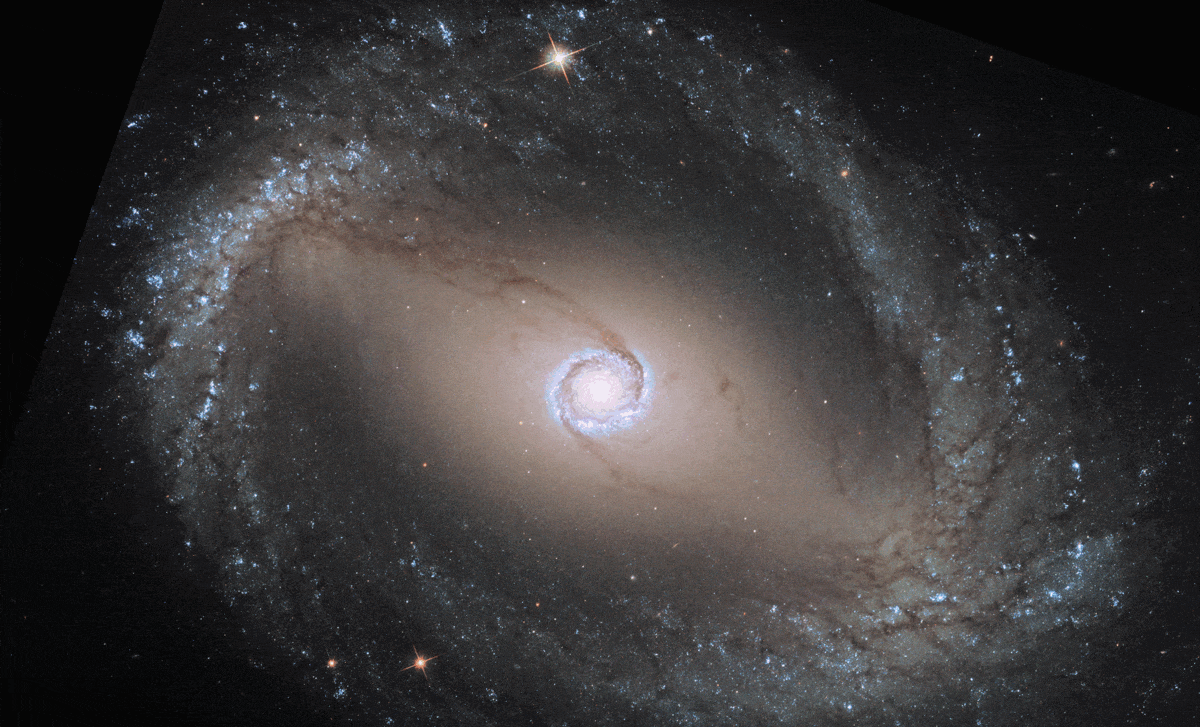
With exquisite JWST maps of the gas and dust with both near-infrared and mid-infrared data, this picture is not only confirmed, but we’re learning all sorts of new details about how it happens inside the environments of these various spiral galaxies. In each of the images — and you can access all 19 of them at the link provided here — the near-infrared imaging from JWST has allowed astronomers to identify literally millions of individual stars, as these galaxies are close enough and large enough that JWST’s optics can identify, resolve, and pick out enormous numbers of stars even at distances of millions or tens of millions of light-years.
We can also see two distinct classes of dusty features in mid-infrared light.
- The dust that exists behind, around, and between stars, which is to say the dust that persists in the regions where the stars are not, having yet to be evaporated away by the intense radiation that those stars emit.
- The dust that encases stars that are still in the process of forming, where gas and dust are feeding the growth of stars and (possibly) star clusters inside these star-forming regions, where the radiation and outflows from these stars and proto-stars has not yet blown the dust away from them.
When you combine near-infrared and mid-infrared data from JWST, and if you choose to, you can fold in optical data from Hubble and possibly other data as well, you can see evidence for these features side-by-side.
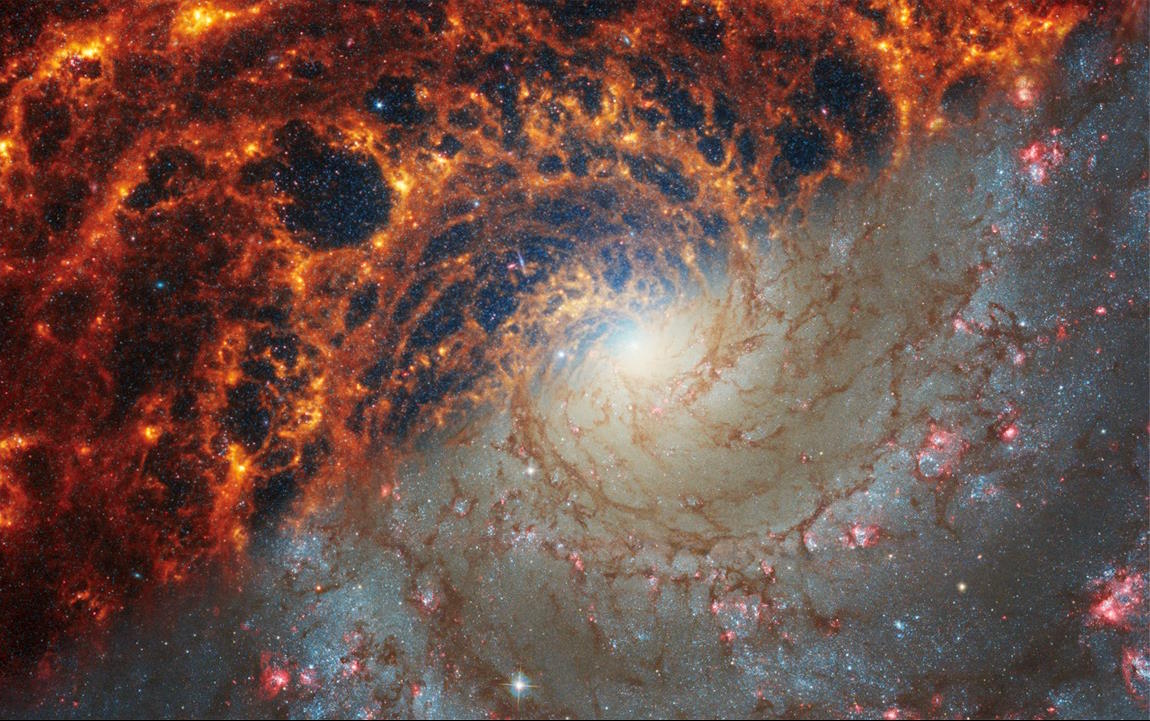
What the evidence is showing for the life cycle of normal matter, and for the stars that form inside these galaxies, is a remarkable story that not everyone anticipated. Whereas the conventional wisdom, for a long time, held that stars would form continuously along these spiral arms at all radii from the galactic center equally, the data is telling a different story. It appears that galaxies grow, and star-formation propagates, from the inside of a galaxy on outward.
Episodes of star-formation appear to begin at the core of a galaxy, and spread along the arms of the galaxy thereafter, propagating outward. We can see evidence for this by measuring the ages of the stellar populations we’re finding at various distances from the centers of these galaxies: the farther away a star is from the galaxy’s core, the more likely it is to be younger. On the other hand, if you look near the cores of many of these galaxies, you’ll find — in the JWST images — that there’s an “emptiness” of gas and dust there, and simply a dense bulge of stars, which generally tend to be populations of older stars.
Additionally, where you see these bright “spikes” emerging from a galaxy’s center, which a few of these galaxies exhibit, that is evidence for either a supermassive black hole that’s actively feeding at their cores, or alternatively a series of star clusters that are so bright that the image itself becomes saturated within JWST’s detectors.
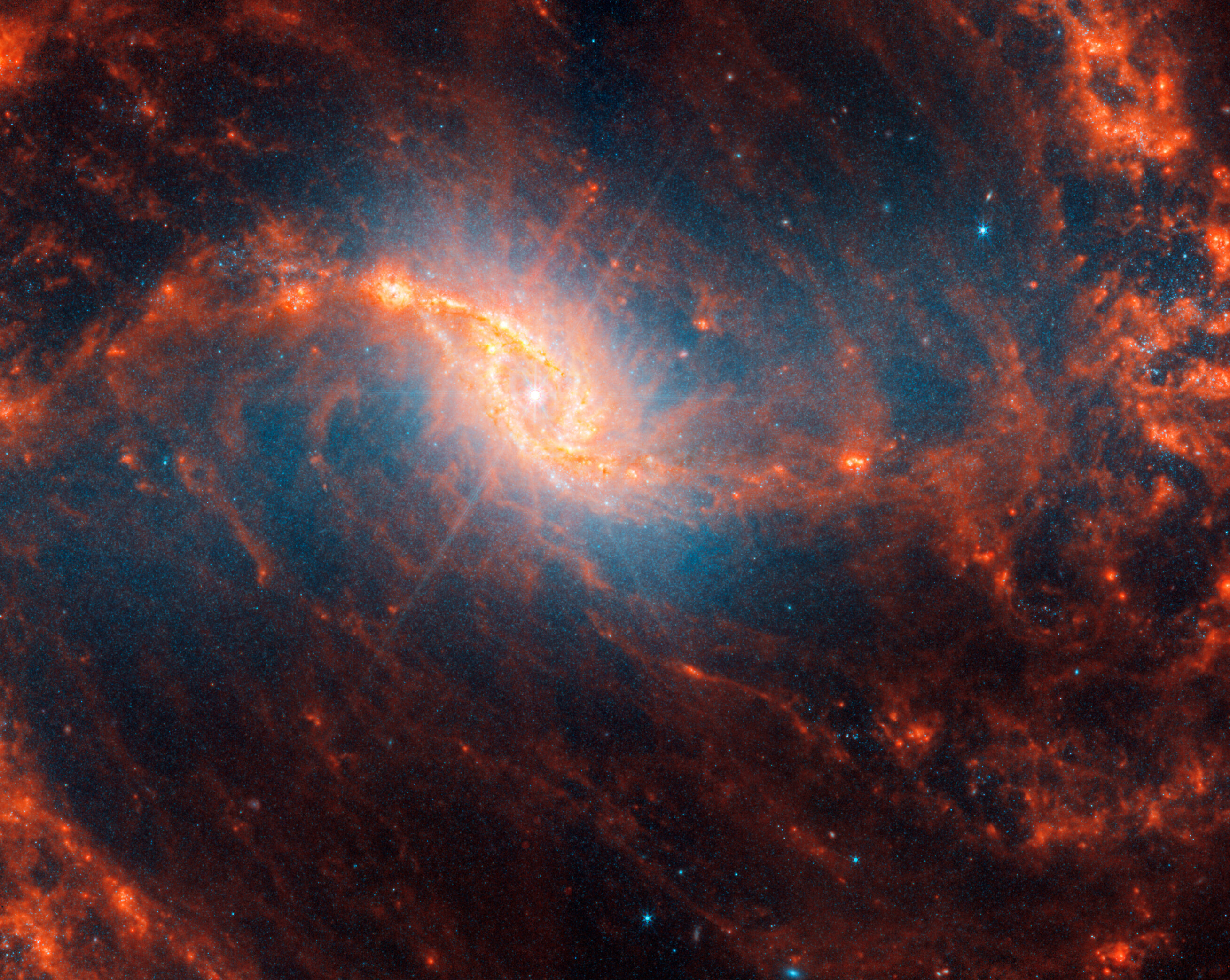
With exquisite NIRCam and MIRI imaging of these 19 PHANGS galaxies, there’s a lot more to examine than simply the fascinating and intricately beautiful maps of gas and dust that provide a visual feast for our eyes. There are millions upon millions of stars imaged and resolved in these images, allowing astronomers to get an unprecedented look at stellar populations in spiral galaxies outside of our own Local Group. Measurements of individual stars also help us understand how the stellar life cycle works: where gravitational collapse, turbulent flows, and various types of radiation and winds all interact to give rise to stars, star clusters, and non-stellar features within each of these galaxies.
There are also around 100,000 star clusters identified within these 19 galaxies, cumulatively, which is the largest catalog of star clusters ever developed. Even though there were around 150 researchers involved with the PHANGS program, as Professor Erik Rosolowsky put it, “The amount of analysis that can be done with these images is vastly larger than anything our team could possibly handle. We’re excited to support the community so all researchers can contribute.” As the full suite of data from this program is now fully public, the astronomy community now has access to all of it, and it’s possible that there will be revolutions brewing in how we understand the relationship between stars, gas, dust, and their host galaxies going forward.
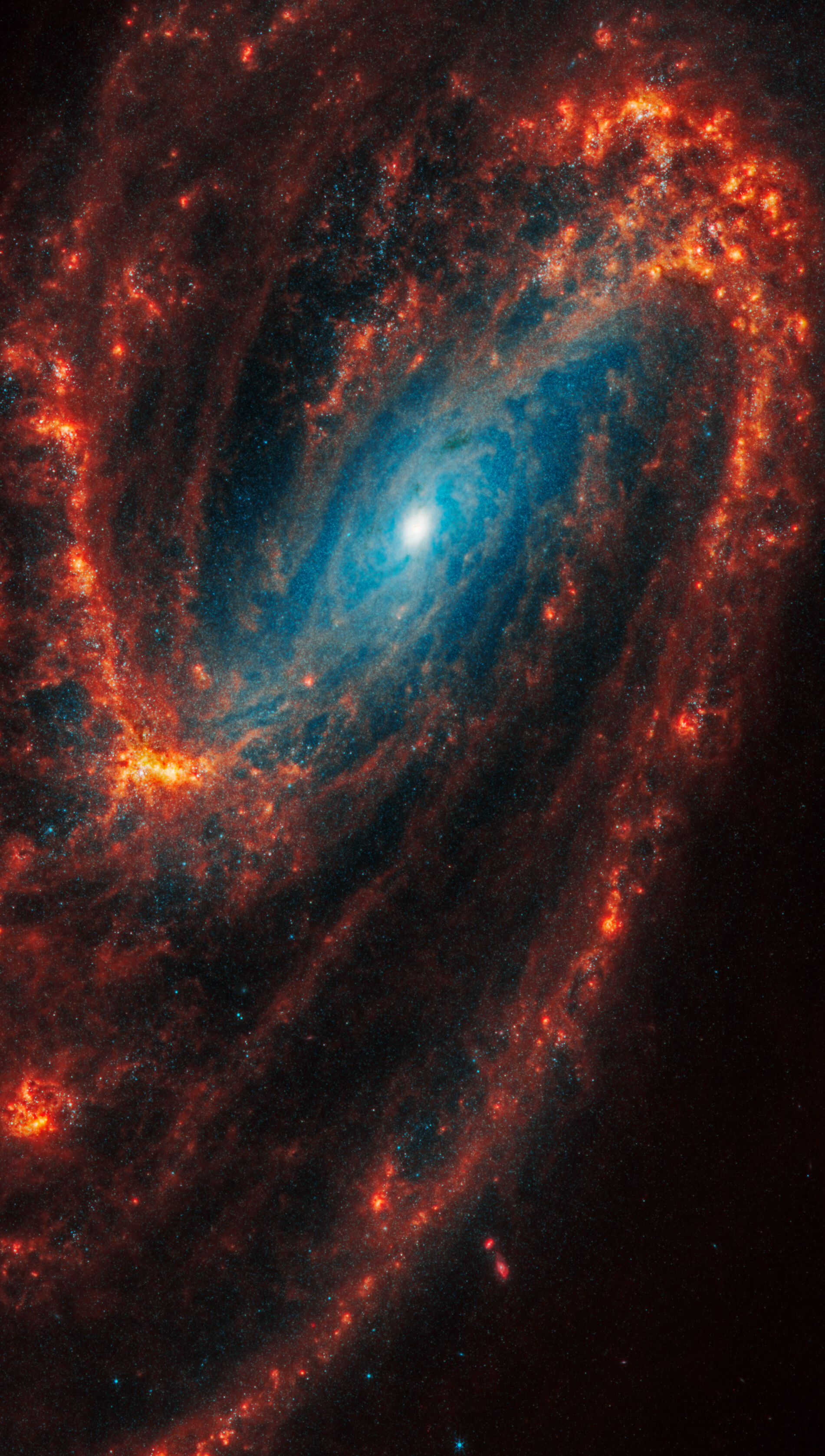
What’s most amazing to many, however, is that despite how different these galaxies appear from one another, both at a cursory level and in detail, is that the same processes are at play within them, and the same conclusions can be drawn from looking at all of them together. When we see these bubbles and cavities in the dust, as well as the filamentary dust network and how it follows and lines the spiral arms, we’re probing the star-formation cycle on the smallest observed scales ever. As astronomers measure the spacing between the stellar, gaseous, and dusty features within these galaxies, they’re learning how a galaxy’s gas and dust are distributed, which provides insights into the processes that shape them.
From supermassive black holes at their cores to the star-forming events, both past and present, that are occurring within these galaxies, as well as the young populations of new stars and star clusters that have resulted from relatively recent star-forming episodes, the PHANGS collaboration is shedding new insights on how galaxies grow, how gas and dust are transported, and how star-formation shapes the internal structure of these galaxies themselves. There’s enough information encoded in these images that we can expect scientific insights to keep arriving from this study, alone, for many years hereafter. With better data and insights as to the vital factors that shape these galaxies, simulations of individual galaxies should improve, enabling us a better understanding of how stars, gas, and dust are all interrelated, and how they impact the overall galaxy and its evolution as a result.
